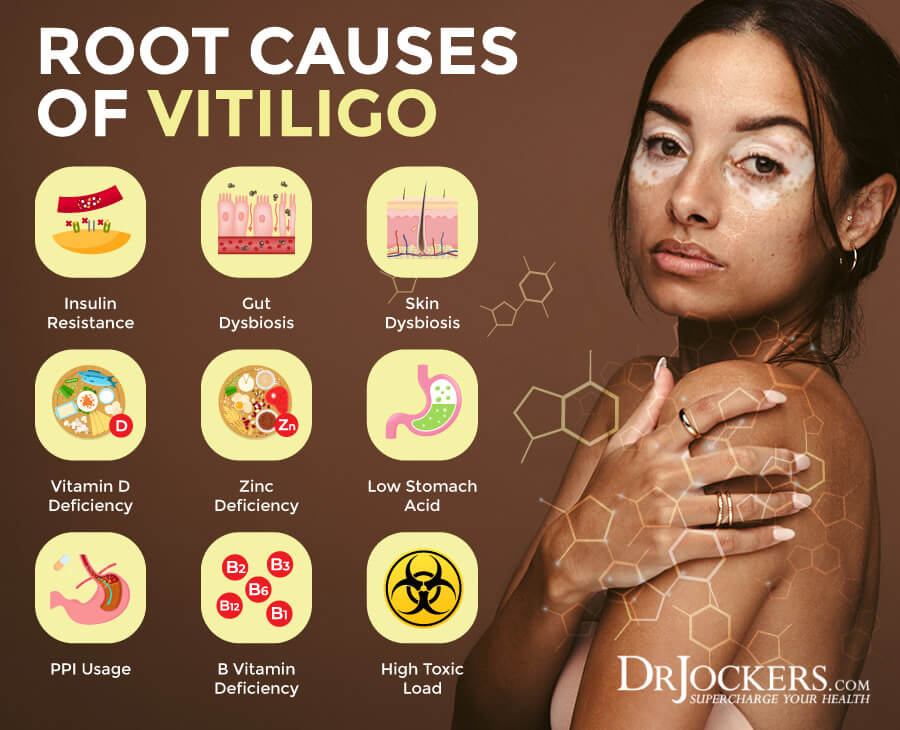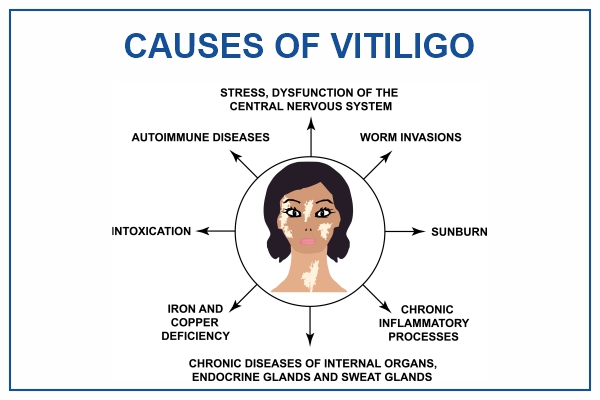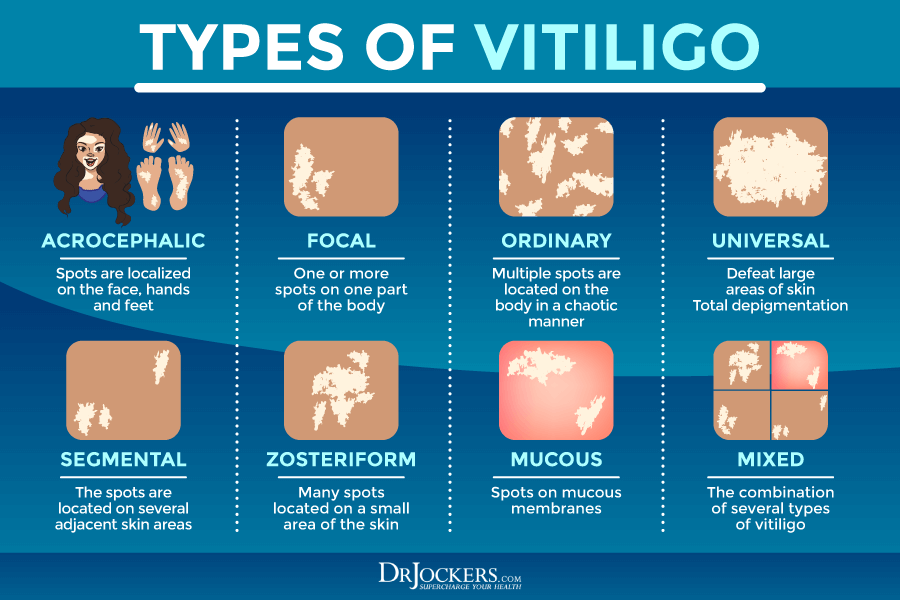Have you ever wondered why some people develop white patches on their skin? It's a question many ask, and it really is about a condition known as vitiligo. This change in skin color can feel a bit confusing, and so many people want to know what exactly brings it about. It's not just a surface-level change; it points to something happening deeper within the body. We're going to talk about the main things that researchers think contribute to this condition, giving you a clearer picture of its beginnings.
The involved patches of skin are distinct because they lose their usual color, which is that, what makes vitiligo stand out. This happens when the cells responsible for making pigment, called melanocytes, either stop working or actually die off. When these important cells are gone or just not doing their job, the skin can't produce melanin anymore. Melanin, you know, is what gives our skin, hair, and eyes their color, so without it, the affected areas become very light or entirely white.
Understanding what's the most likely cause of my symptoms or what are other possible causes for these white patches is often the first step for anyone noticing them. It's a common concern, and really, there are several ideas scientists are looking into right now. While the exact reason vitiligo starts isn't fully clear, there's quite a bit of ongoing research that has pointed to some very strong possibilities. So, let's explore those ideas and see what the current thinking is on why vitiligo happens.
Table of Contents
- What Is Vitiligo?
- The Primary Culprit: Melanocyte Loss
- The Autoimmune Connection
- Genetic Factors: Is It In Your Family?
- Environmental Influences and Other Triggers
- Vitiligo and Skin Types
- Other Causes of White Patches
- Personal Experiences and Medication Concerns
- Exploring Treatment Options
- Frequently Asked Questions About Vitiligo Causes
What Is Vitiligo?
Vitiligo is a condition where your skin loses its pigment cells, which really means the parts of your body where this happens will show very light or white patches. It’s like the skin’s natural coloring mechanism has, in a way, paused or stopped entirely. These patches can appear on any part of the body, and they tend to enlarge slowly over time. This loss of pigment can affect people of all ethnicities and skin types, though it can be more noticeable in individuals with darker complexions, simply because the contrast is greater.
The Primary Culprit: Melanocyte Loss
At its very core, vitiligo occurs when the cells that produce melanin die or no longer form melanin. These are the melanocytes, as we talked about, and they are the specialized skin cells that make pigment. Without these cells functioning correctly, the skin just can’t produce the color it normally would. So, when these melanocytes are gone or cease to work, it causes slowly enlarging white patches to appear on the skin. It’s unclear exactly what causes this specific process of cell death or dysfunction, but scientists are really looking into it.
The Autoimmune Connection
One of the leading theories about vitiligo causes points to it being an autoimmune disease. This type of disease develops when your immune system, which is meant to protect your body from outside invaders like germs, mistakenly attacks part of your own body. In the case of vitiligo, if you have it, your immune system attacks cells in your own body that are supposed to be there. Scientists believe that vitiligo is an autoimmune disease in which the body’s immune system attacks and destroys the melanocytes. This is a very significant piece of the puzzle, and researchers continue to study how this immune system malfunction happens.
Genetic Factors: Is It In Your Family?
It turns out that your family history might play a part in whether you develop vitiligo. While research is ongoing to learn more about the causes of vitiligo, studies indicate that about 30% of vitiligo cases are genetic. This means that the condition is hereditary, and you might have a higher chance of developing it if someone in your family already has it. Genetic factors appear to contribute to 80% of vitiligo risk, whilst environmental factors account for 20%. So, family background is a pretty big piece of the picture, even if it’s not the only one.
Environmental Influences and Other Triggers
Beyond genetics and the immune system, other factors might also play a role in vitiligo causes. The cause of vitiligo is unknown, but it may be related to immune system changes, genetic factors, stress, or sun exposure. What’s more, susceptibility to it may be affected by regional environmental risk. This suggests that where you live and what you're exposed to in your daily life could, in some respects, influence whether the condition develops or flares up. It’s a complex mix, really, of internal body processes and external surroundings.
Vitiligo and Skin Types
Vitiligo affects people of all ethnicities and skin types. It's not something that picks and chooses based on your background. However, it can be more perceptible in people with darker skin tones simply because the contrast between the unpigmented patches and the natural skin color is much more obvious. While the exact cause is unknown, research has suggested that various factors are at play, and this condition can emerge in anyone, regardless of their skin’s original shade.
Other Causes of White Patches
It's important to remember that a small white patch on skin may have several causes, and not all of them are vitiligo. For instance, conditions like eczema or psoriasis can sometimes present with lighter areas. So, if you notice a new patch, it's always a good idea to have it looked at by a healthcare professional. They can help figure out what's really going on and whether it's vitiligo or something else entirely.
Personal Experiences and Medication Concerns
Sometimes, personal experiences shed light on how complex this condition can be. For example, one person mentioned they had small signs of vitiligo (an autoimmune condition) starting 6 months prior to their first Pfizer mRNA vaccine. There were very limited discolorations in a few places. Another question that came up was about whether using tretinoin cream could cause vitiligo to flare up, similar to what happened after a treatment of Accutane (isotretinoin). Are the two the same, or do they just have similar effects? These individual stories and concerns highlight the need for more research and personalized medical advice.
Exploring Treatment Options
While we're talking about vitiligo causes, it's also worth knowing that there are treatments available. For example, studies have looked at the efficacy of transplantation of combination of noncultured dermal and epidermal cell suspension versus epidermal cell suspension alone in vitiligo. This kind of research is really important because it aims to find ways to help the skin regain its pigment. Learning more about this condition, in which your skin loses pigment cells, resulting in very light or white patches on parts of the body, helps us appreciate the ongoing efforts to find effective ways to manage it.
Frequently Asked Questions About Vitiligo Causes
What is the main reason someone gets vitiligo?
The primary reason someone gets vitiligo is that the cells that produce melanin, called melanocytes, either die or stop making pigment. This leads to the characteristic white patches on the skin. Scientists believe this often happens because the body’s own immune system mistakenly attacks and destroys these melanocytes, making it an autoimmune condition. So, in essence, your body's defense system turns against its own pigment-making cells, which is a bit surprising, really.
Is vitiligo always passed down in families?
No, vitiligo isn't always passed down in families, but genetic factors do play a significant role. Research suggests that about 30% of vitiligo cases are hereditary, meaning they run in families. Genetic factors contribute to a substantial portion of the risk, around 80%, while environmental factors account for the remaining 20%. So, while having a family member with vitiligo can increase your chances, it's not a guarantee, and many people develop it without any family history.
Can stress or sun exposure cause vitiligo to appear?
While stress and sun exposure aren't considered the direct, primary causes of vitiligo, they are factors that some research suggests may be related to its onset or flare-ups. The exact cause of vitiligo is unknown, but it may be related to immune system changes, genetic factors, stress, or sun exposure. Additionally, how susceptible someone is to vitiligo might be affected by regional environmental risks. So, these environmental elements could potentially act as triggers for those who are already predisposed to the condition, rather than being the sole cause themselves.
Understanding vitiligo causes helps us appreciate why seeking medical advice is so important if you notice changes in your skin. Learn more about vitiligo on our site, and for more in-depth information, you might want to visit a reputable health organization's website, such as the National Institute of Arthritis and Musculoskeletal and Skin Diseases (NIAMS). It’s always a good idea to talk to a doctor about any skin concerns you have, and they can help determine the best path forward for you. You can also link to this page here for further reading on skin conditions.



Detail Author:
- Name : Bartholome Walter IV
- Username : fisher.jalyn
- Email : bruen.meghan@grady.info
- Birthdate : 1981-05-29
- Address : 7746 Wisozk Ferry Kuphalport, ND 58016
- Phone : +15598781610
- Company : Goodwin Group
- Job : Shipping and Receiving Clerk
- Bio : Voluptas eveniet non totam quos excepturi sed inventore. Aliquid officiis quibusdam inventore aut est amet quia. Corporis ullam temporibus possimus itaque exercitationem rem.
Socials
facebook:
- url : https://facebook.com/aniya_official
- username : aniya_official
- bio : Iste laborum eaque quae et suscipit consequuntur.
- followers : 6230
- following : 1348
twitter:
- url : https://twitter.com/aniya.miller
- username : aniya.miller
- bio : Omnis consequatur in corrupti ut. Rem rerum nisi repellat ipsa dolorem. Reprehenderit sunt quo ipsum.
- followers : 6850
- following : 1321



























